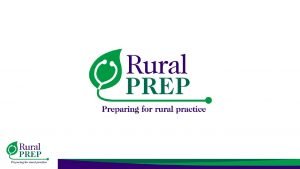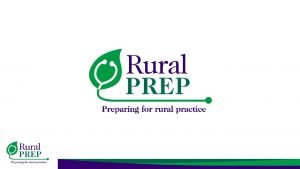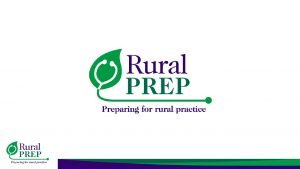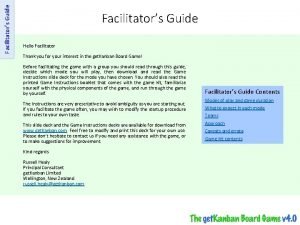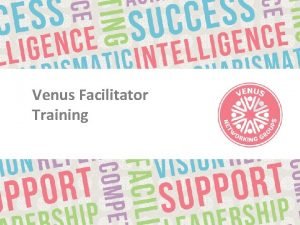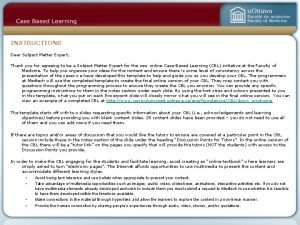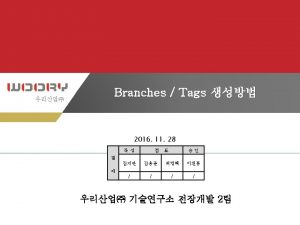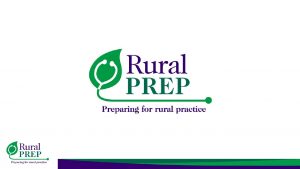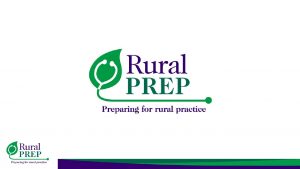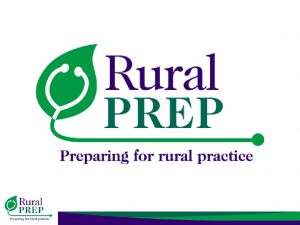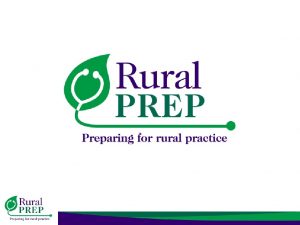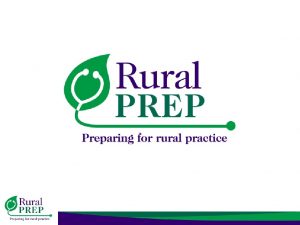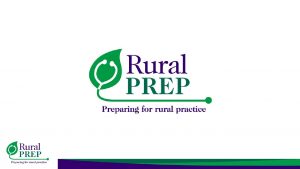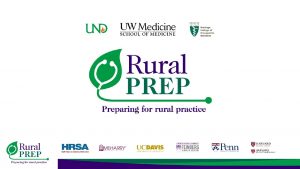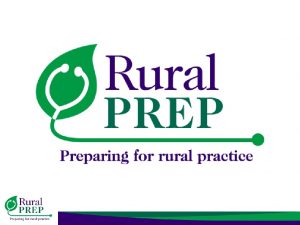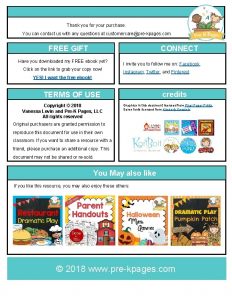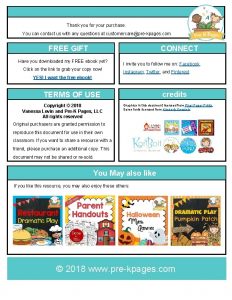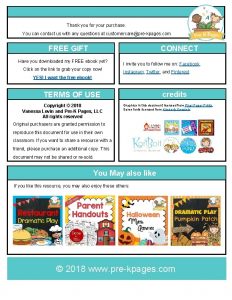A Note to Facilitators Dear Facilitator Thank you

























- Slides: 25


A Note to Facilitators Dear Facilitator, Thank you for using Rural PREP’s materials to create an active learning experience for your site. Use this slide deck, along with the Facilitator Lesson Plan, to facilitate a Grand Rounds event at your site. Many of the slides contain additional information in the presenter notes area, so be sure to review the presentation and the notes prior to your Grand Rounds event.

Session Overview • 5 minutes: Go over and discuss pre-assignment answers with the full group • 25 minutes: Watch the Presentation • 15 minutes: Facilitate the Team Activity • 10 minutes: General Discussion and Social Charge • 5 minutes: Evaluation of the Learning Materials as a group

Mental Health in Rural Communities: The example of the Midwest dairy farmer Presented by: Diane Rohlman, Ph. D Associate Professor and Endowed Chair in Rural Health and Safety, University of Iowa

Objectives After this presentation, participants will be able to: 1. Identify factors associated with stress among rural communities. 2. Discuss barriers associated with accessing mental health care in rural communities. 3. Apply resources to patients experiencing distress. 4. Develop strategies for patient treatment while taking into account the unique aspects of farming.

Team Readiness Quiz

Team Readiness Quiz 1. All of the following measures have the potential to reduce suicide rates across the rural-urban continuum, except: a. b. c. d. Improving social connectedness Improving health insurance coverage Ignoring levels of access to lethal means Fostering civic opportunities

Team Readiness Quiz 1. All of the following measures have the potential to reduce suicide rates across the rural-urban continuum, except: a. b. c. d. Improving social connectedness Improving health insurance coverage Ignoring levels of access to lethal means Fostering civic opportunities

Team Readiness Quiz 2. According to the suicide rates indexed across a span of 18 years (1999 – 2016) in this study, the highest suicide rate was observed in males, in the age group of: a. b. c. d. 55 -64 years 25 -34 years 35 -44 years 45 -54 years

Team Readiness Quiz 2. According to the suicide rates indexed across a span of 18 years (1999 – 2016) in this study, the highest suicide rate was observed in males, in the age group of: a. b. c. d. 55 -64 years 25 -34 years 35 -44 years 45 -54 years

Team Readiness Quiz 3. The rate of suicide among veterans is higher than general population a. b. True False

Team Readiness Quiz 3. The rate of suicide among veterans is higher than general population a. b. True False

Team Readiness Quiz 4. The rate of suicide is higher among people living in the urban areas compared to those living in the rural areas a. b. True False

Team Readiness Quiz 4. The rate of suicide is higher among people living in the urban areas compared to those living in the rural areas a. b. True False

Team Readiness Quiz 5. The number of question/s in the Agri. Safe’s self-assessment tool for mental health screening is/are: a. b. c. d. 4 6 1 2

Team Readiness Quiz 5. The number of question/s in the Agri. Safe’s self-assessment tool for mental health screening is/are: a. b. c. d. 4 6 1 2

Team Readiness Quiz 6. For agricultural families, change in farm policies, chemical exposure, loss of crop or livestock, and weather are precipitating factors for: a. b. c. d. Stress Wellness Health Stigma

Team Readiness Quiz 6. For agricultural families, change in farm policies, chemical exposure, loss of crop or livestock, and weather are precipitating factors for: a. b. c. d. Stress Wellness Health Stigma

Mental Health in Rural Communities: The example of the Midwest dairy farmer Presented by: Diane Rohlman, Ph. D Associate Professor and Endowed Chair in Rural Health and Safety, University of Iowa Launch the Presentation

Team Activity

Team Activity • What symptoms of stress were identified? • What specific functions and activities could the family have done that may have changed the outcome? • Who within this family could make this happen? • What barriers do you think the family could have in making these identified changes? • What role could you have in assisting this family?

Discussion

Social Charge What are you personally going to do with this information?

Evaluation Please evaluate these learning materials as a group: Online Evaluation

 Thank you note to training facilitator
Thank you note to training facilitator Thank you message for facilitator
Thank you message for facilitator Thank you facilitator
Thank you facilitator Request letter for training facilitator
Request letter for training facilitator Thank you facilitator
Thank you facilitator Facilitator feedback survey
Facilitator feedback survey Dear kate thank you for your letter
Dear kate thank you for your letter Hello my students
Hello my students Dear ben thank you for your letter
Dear ben thank you for your letter How to thank a training facilitator
How to thank a training facilitator Vmpi
Vmpi External facilitators advertising
External facilitators advertising External facilitators advertising
External facilitators advertising Thank you note to subject matter expert
Thank you note to subject matter expert Claudia montanari radiata
Claudia montanari radiata Q and a criteria for judging
Q and a criteria for judging Thank you note to preceptor after orientation
Thank you note to preceptor after orientation Thank you note to preceptor after orientation
Thank you note to preceptor after orientation Thank you for listening slides
Thank you for listening slides Worthy is the lamb high and lifted up
Worthy is the lamb high and lifted up Thank you jesus for dying on the cross
Thank you jesus for dying on the cross Any question thank you
Any question thank you Difference between note making and note taking
Difference between note making and note taking Signal words examples
Signal words examples Difference between note making and note taking
Difference between note making and note taking Goods received note vs delivery note
Goods received note vs delivery note
